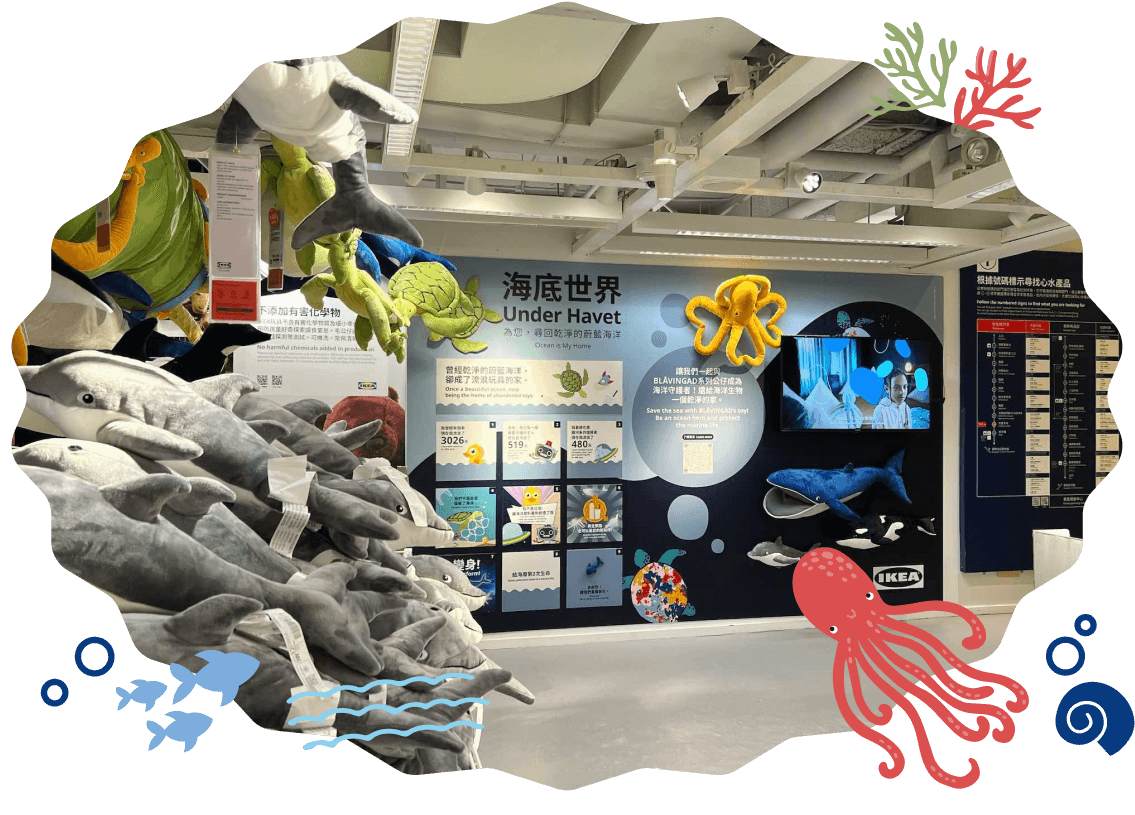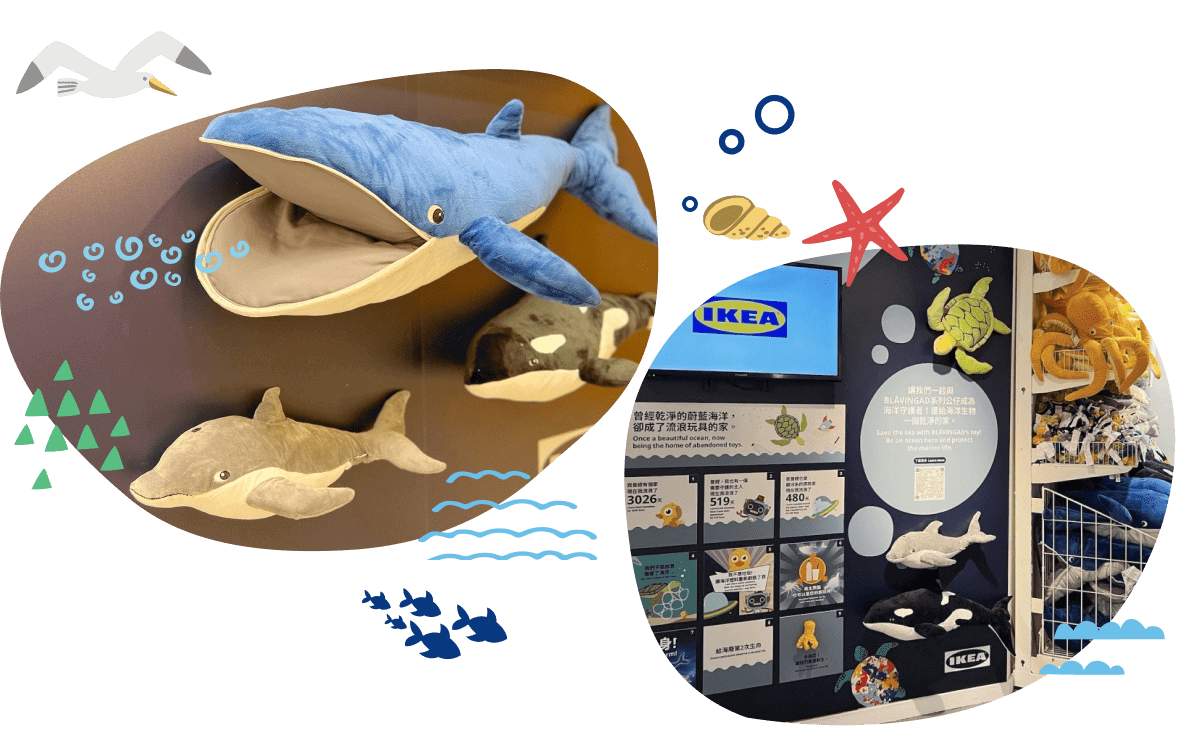Turning Marine Debris Into Children’s Toys
Furthermore, the “Under Havet” exhibition shared how IKEA reused ocean pollutants by incorporating fillings made of recycled polyester from ocean-bound plastic into manufacturing. These fillings were then used in the eco-friendly BLÅVINGAD collection of soft toys. With the help of soft toys and decorations, IKEA’s “Under Havet” exhibition allowed visitors to understand how marine pollution destroys the habitats of marine creatures. IKEA hopes to fully utilize reused or recycled materials to manufacture its products by 2030. The company also hopes that consumers will show their support for ocean conservation by opting for more eco-friendly household products. Let us wisely use Earth’s limited resources to build a circular economy and create a better life for all.





